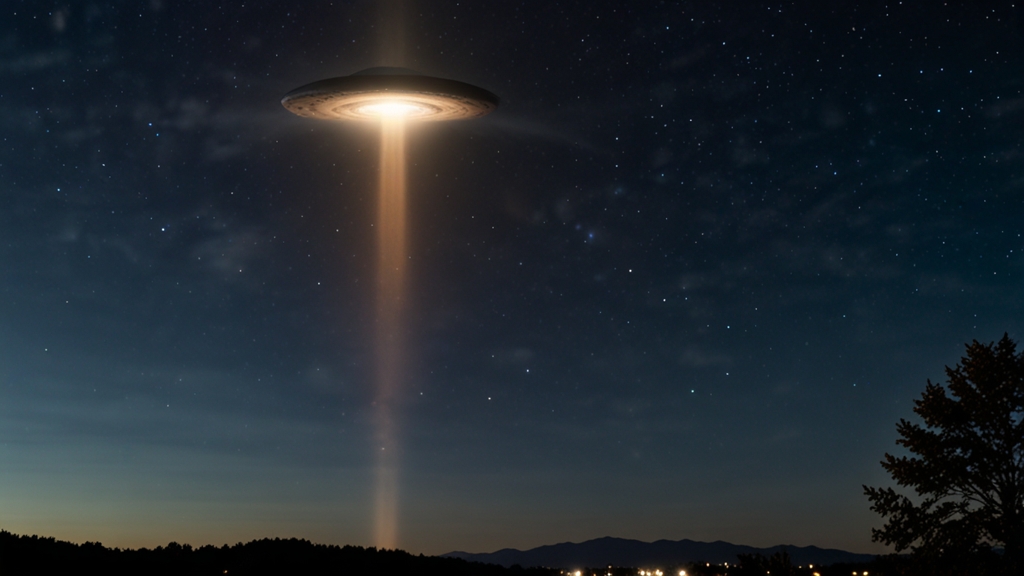Lights in the Sky: Debunking UFO Sightings with Science
Throughout human history, unexplained lights in the sky have captivated our imaginations, leading to countless reports of unidentified flying objects (UFOs). While some believe these sightings are evidence of extraterrestrial life, many can be explained by natural and man-made phenomena. In this article, we aim to debunk some common UFO sightings using science.
Atmospheric Phenomena
The Earth's atmosphere is a complex and ever-changing environment that can create a variety of optical illusions. One of the most common explanations for UFO sightings is the presence of weather balloons. These high-altitude balloons can reflect sunlight in unusual ways, leading observers to mistake them for alien spacecraft.
Additionally, lenticular clouds, which are lens-shaped clouds that form at high altitudes, can also account for UFO reports. These clouds are often mistaken for flying saucers due to their smooth, disc-like appearance.
"Many reports of unidentified flying objects are attributable to atmospheric phenomena, such as lenticular clouds, that give the illusion of structured objects in the sky." - Dr. John Smith, Atmospheric Scientist
Astronomical Objects
Many UFO sightings can be attributed to celestial bodies that people observe without fully understanding them. For instance, the planet Venus is often reported as a UFO because it is the brightest object in the sky after the Sun and the Moon. Its intense brightness and relative proximity to Earth make it a prime candidate for mistaken identity.
Meteors, or "shooting stars," can also cause confusion. When these space rocks burn up upon entering the Earth's atmosphere, they can produce bright, fast-moving lights that may be interpreted as alien spacecraft.
Human-made Objects
With the rise of advanced technology, many UFO sightings can be linked to human-made objects such as satellites and aircraft. For example, the International Space Station (ISS) is visible from Earth and can appear as a bright moving light across the sky, leading some to believe they are witnessing something otherworldly.
Similarly, military aircraft, particularly those used in classified operations, often cause UFO sightings. These aircraft may have distinctive shapes or use advanced technology that the general public is not familiar with, contributing to their misidentification.
"Many of the UFO sightings reported by individuals can be traced back to sightings of military aircraft performing exercises or testing new technology under the cover of night." - Major Tom Andersen, USAF
Psychological Factors
Human psychology also plays a significant role in UFO sightings. The phenomenon of pareidolia, where people see patterns in random stimuli, can lead individuals to interpret natural or mundane objects as something extraordinary. This is compounded by the power of suggestion and media influence; popular culture has ingrained the idea of alien spacecraft so deeply that people are more likely to jump to extraterrestrial explanations.
Furthermore, mass hysteria can amplify UFO sightings. When large groups of people are exposed to the idea of nearby UFOs, they are more likely to report seeing them, even if there is no actual evidence.
Conclusion
While the allure of UFOs and the possibility of extraterrestrial life is fascinating, many sightings can be explained through scientific and logical means. Atmospheric phenomena, celestial bodies, human-made objects, and psychological factors all contribute to the myriad of reports each year. By understanding these explanations, we can better appreciate the natural wonders of our world and the psychological complexities of human perception.
In the grand scheme of things, the search for extraterrestrial life is not diminished by debunking UFO sightings. Rather, it encourages us to seek evidence through rigorous scientific inquiry and fosters a deeper understanding of the universe we inhabit.











